Related Research Articles

The Staatliches Bauhaus, commonly known as the Bauhaus, was a German art school operational from 1919 to 1933 that combined crafts and the fine arts. The school became famous for its approach to design, which attempted to unify the principles of mass production with individual artistic vision and strove to combine aesthetics with everyday function.
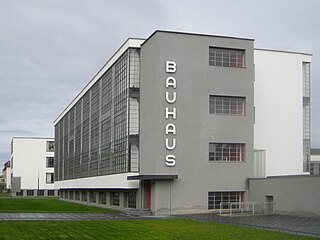
Weimar culture was the emergence of the arts and sciences that happened in Germany during the Weimar Republic, the latter during that part of the interwar period between Germany's defeat in World War I in 1918 and Hitler's rise to power in 1933. 1920s Berlin was at the hectic center of the Weimar culture. Although not part of the Weimar Republic, some authors also include the German-speaking Austria, and particularly Vienna, as part of Weimar culture.
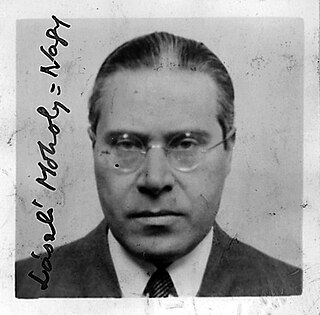
László Moholy-Nagy was a Hungarian painter and photographer as well as a professor in the Bauhaus school. He was highly influenced by constructivism and a strong advocate of the integration of technology and industry into the arts. The art critic Peter Schjeldahl called him "relentlessly experimental" because of his pioneering work in painting, drawing, photography, collage, sculpture, film, theater, and writing.

COBRA was a European avant-garde movement active from 1948 to 1951. The name was coined in 1948 by Christian Dotremont from the initials of the members' home countries' capital cities: Copenhagen (Co), Brussels (Br), Amsterdam (A).

De Stijl, Dutch for "The Style", also known as Neoplasticism, was a Dutch art movement founded in 1917 in Leiden. De Stijl consisted of artists and architects. In a more narrow sense, the term De Stijl is used to refer to a body of work from 1917 to 1931 founded in the Netherlands. Proponents of De Stijl advocated pure abstraction and universality by a reduction to the essentials of form and colour; they simplified visual compositions to vertical and horizontal, using only black, white and primary colors.

Suprematism is an early twentieth-century art movement focused on the fundamentals of geometry, painted in a limited range of colors. The term suprematism refers to an abstract art based upon "the supremacy of pure artistic feeling" rather than on visual depiction of objects.

Mart Stam was a Dutch architect, urban planner, and furniture designer. Stam was extraordinarily well-connected, and his career intersects with important moments in the history of 20th-century European architecture, including the invention of the cantilever tubular chair, teaching at the Bauhaus, contributions to the Weissenhof Estate, the Van Nelle Factory,, buildings for Ernst May's New Frankfurt housing estates, followed by work in the USSR with the idealistic May Brigade, to teaching positions in Amsterdam and post-war East Germany. Upon return to the Netherlands he contributed to postwar reconstruction and finally retired,, in Switzerland, where he died.

Der Sturm was a German avant-garde art and literary magazine founded by Herwarth Walden, covering Expressionism, Cubism, Dada and Surrealism, among other artistic movements. It was published between 1910 and 1932.

Max Taut was a German architect of Prussian Lithuanian heritage.
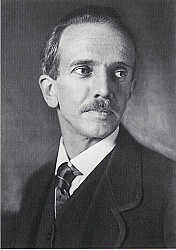
Otto Bartning was a Modernist German architect, architectural theorist and teacher. In his early career he developed plans with Walter Gropius for the establishment of the Bauhaus. He was a member of Der Ring. In 1951, he was elected president of the Federation of German Architects.

Constructivist architecture was a constructivist style of modern architecture that flourished in the Soviet Union in the 1920s and early 1930s. Abstract and austere, the movement aimed to reflect modern industrial society and urban space, while rejecting decorative stylization in favor of the industrial assemblage of materials. Designs combined advanced technology and engineering with an avowedly communist social purpose. Although it was divided into several competing factions, the movement produced many pioneering projects and finished buildings, before falling out of favour around 1932. It has left marked effects on later developments in architecture.
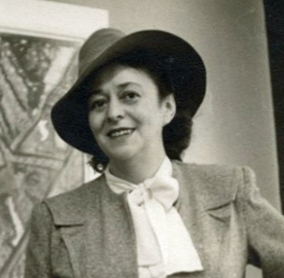
Teresa Żarnowerówna was a Polish avant-garde artist, painter, sculptor, scenographer, and architect.
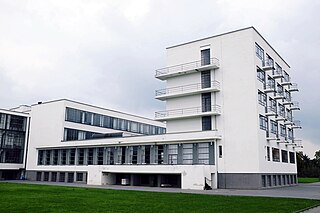
The New Objectivity is a name often given to the Modern architecture that emerged in Europe, primarily German-speaking Europe, in the 1920s and 30s. It is also frequently called Neues Bauen. The New Objectivity remodeled many German cities in this period.

Iwao Yamawaki, born Iwao Fujita, was a Japanese photographer and architect who trained at the Bauhaus.

Georg Muche was a German painter, printmaker, architect, author, and teacher.

Galka Scheyer was a German-American painter, art dealer, art collector, and teacher. She was the founder of the "Blue Four," an artists' group that consisted of Lyonel Feininger, Wassily Kandinsky, Paul Klee and Alexej von Jawlensky.
Kritisk Revy was a quarterly architecture magazine. It was briefly published between 1926 and 1928 in Copenhagen, Denmark. The magazine played a significant role in developing avant-garde culture in Scandinavia in the period between World War I and World War II. It is also the early source for the Danish modern.
Ré Soupault born known as Meta Erna Niemeyer, was a French-German artist, educated at the Bauhaus. She is known for a diversity of artistic works as a photographer, fashion designer, and also as translator.

Ievgeniia Gubkina is a Ukrainian architect and architectural historian specializing in architecture and urban planning of the 20th century in Ukraine, and a multidisciplinary approach to heritage studies. Since 2014 she has co-founded the NGO Urban Forms Center and the avant-garde women's movement "Modernistki".
Helhesten was an arts and literary magazine which was published between 1941 and 1944 in Copenhagen, Denmark. It was one of the leading publications during World War II in the region.
References
- 1 2 3 4 5 6 "Die Bauhaus Zeitschriften" (in German). Bauhaus Bookself. Retrieved 22 September 2022.
- 1 2 Kerry Greaves (2015). Mobilizing the collective: Helhesten and the Danish avant-garde, 1934-1946 (PhD thesis). City University of New York. pp. 33, 39, 54. ISBN 978-1-321-49966-7. ProQuest 1651529564.
- 1 2 3 T'ai Smith (Fall 2006). "Limits of the Tactile and the Optical: Bauhaus Fabric in the Frame of Photography". Grey Room (25): 12, 23, 29. doi:10.1162/grey.2006.1.25.6.
- ↑ Priyanka Basu (March 2020). "Book review. Bauhaus Imaginista: Haus der Kulturen der Welt, Berlin, Germany, March 15–June 10, 2019". West 86th: A Journal of Decorative Arts, Design History, and Material Culture. 27 (1): 130. doi:10.1086/711199.